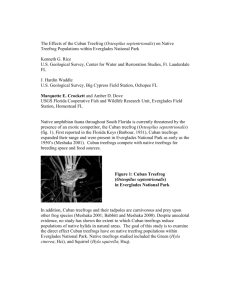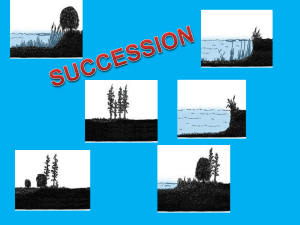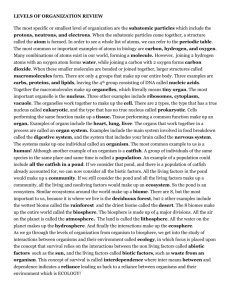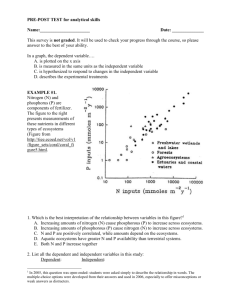Pacific Treefrogs – ANSWER KEY
advertisement
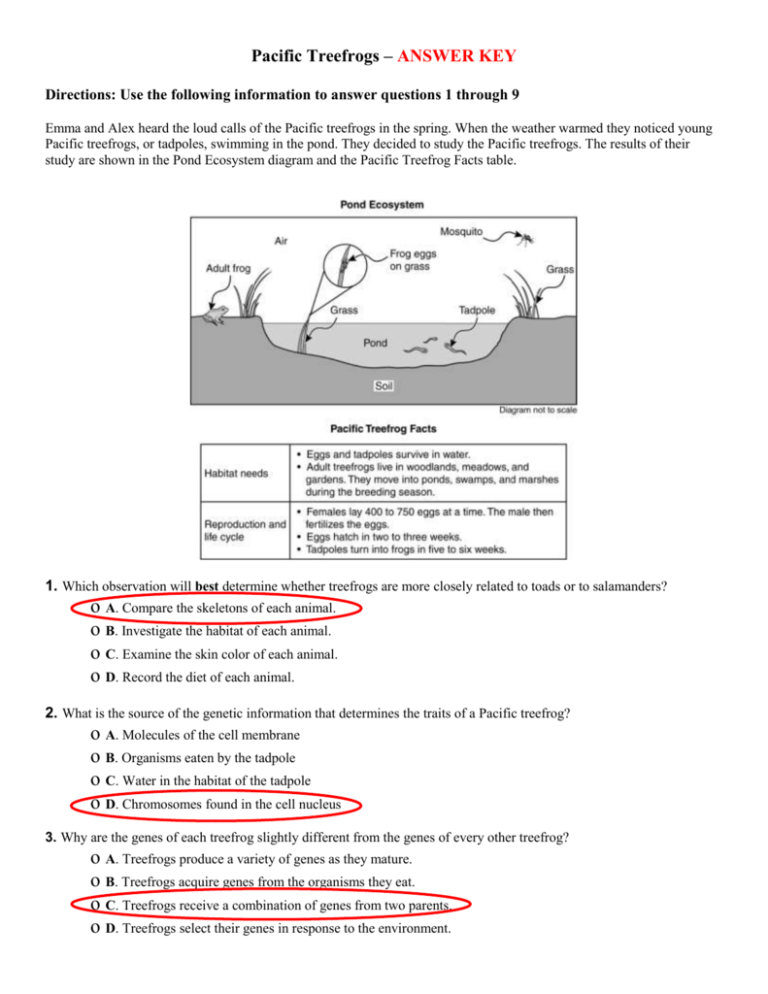
Pacific Treefrogs – ANSWER KEY Directions: Use the following information to answer questions 1 through 9 Emma and Alex heard the loud calls of the Pacific treefrogs in the spring. When the weather warmed they noticed young Pacific treefrogs, or tadpoles, swimming in the pond. They decided to study the Pacific treefrogs. The results of their study are shown in the Pond Ecosystem diagram and the Pacific Treefrog Facts table. 1. Which observation will best determine whether treefrogs are more closely related to toads or to salamanders? o A. Compare the skeletons of each animal. o B. Investigate the habitat of each animal. o C. Examine the skin color of each animal. o D. Record the diet of each animal. 2. What is the source of the genetic information that determines the traits of a Pacific treefrog? o A. Molecules of the cell membrane o B. Organisms eaten by the tadpole o C. Water in the habitat of the tadpole o D. Chromosomes found in the cell nucleus 3. Why are the genes of each treefrog slightly different from the genes of every other treefrog? o A. Treefrogs produce a variety of genes as they mature. o B. Treefrogs acquire genes from the organisms they eat. o C. Treefrogs receive a combination of genes from two parents. o D. Treefrogs select their genes in response to the environment. 4. The body of a tadpole can change shape to improve swimming speed when in danger. Which of these best explains how tadpoles developed this ability? o A. Tadpoles changed their genes in the presence of predators. o B. Tadpoles obtained chemicals from the pond water to change shape. o C. Tadpoles acquired the gene for changing shape from other tadpoles. o D. Tadpoles with the gene for changing shape survived at a higher rate. 5. Treefrogs have adapted to changing environmental conditions over many generations. Which characteristic of treefrogs increases the likelihood a population of Pacific treefrogs will survive? o A. Treefrogs develop from tadpoles. o B. Treefrogs move to water to reproduce. o C. Treefrogs produce 400 to 750 eggs at a time. o D. Treefrogs grow to a length of about 5 centimeters. 6. Emma and Alex plan to use a tank as a Model Pond to study tadpoles. Describe two ways using the Model Pond instead of a real pond might affect the tadpoles. In your description, be sure to: Describe two ways the Model Pond is different from a real pond. Describe how each difference could affect the tadpoles. 7. Emma read that frog populations are decreasing over time in Washington. What data should be collected to determine whether the Pacific treefrog population is decreasing near her school? o A. Compare the number of treefrogs in other areas to the number near the school. o B. Record the number of treefrogs near the school every spring for several years. o C. Survey other students about the number of treefrogs they have seen recently. o D. Count the number of treefrogs within the school grounds on a single day. 8. Which process is a function of the digestive system of animals such as Pacific treefrogs? o A. Forcing carbon dioxide out of the body o B. Producing new blood cells for the body o C. Breaking down food into smaller parts o D. Transporting oxygen throughout the body 9 City planners want to develop a new park on land that has a pond. Describe how an understanding of science or technology can help people like city planners who develop parks for a career. In your description, be sure to: Describe two science or technology concepts city planners would need to consider in developing a park. Describe how understanding each concept will help city planners develop parks without harming any organisms in the area.
